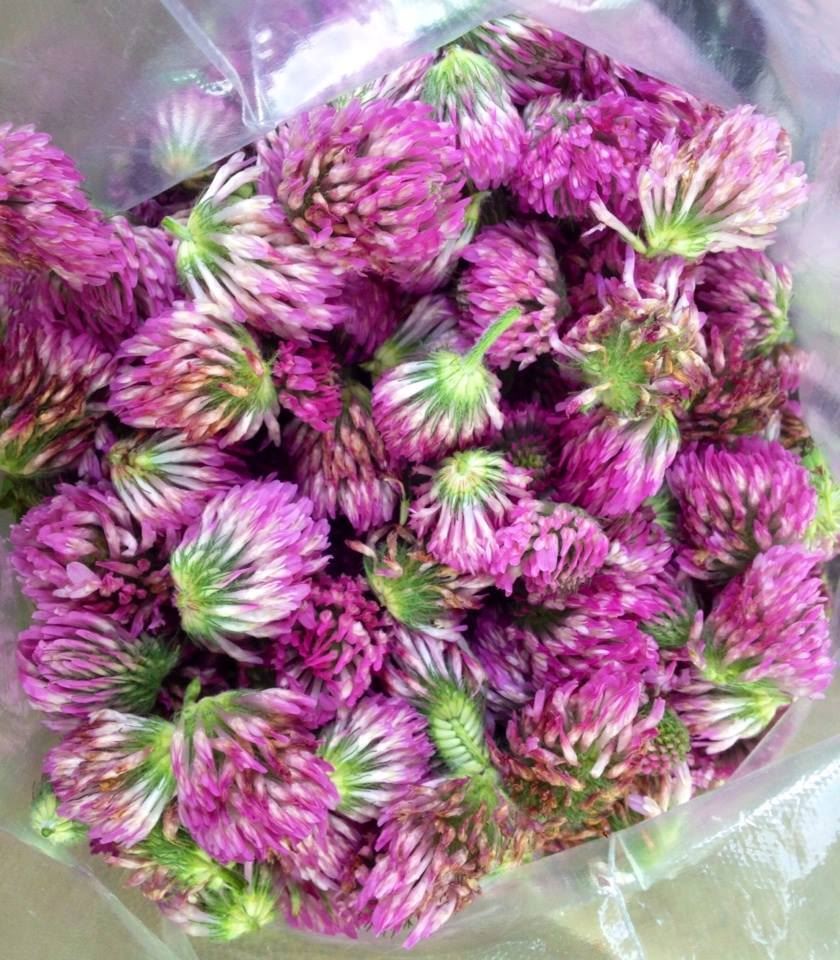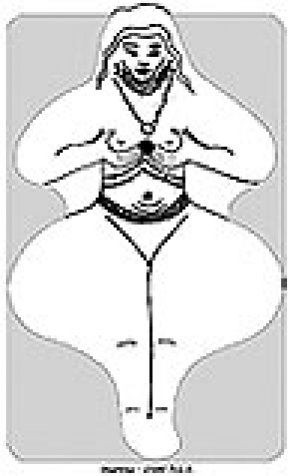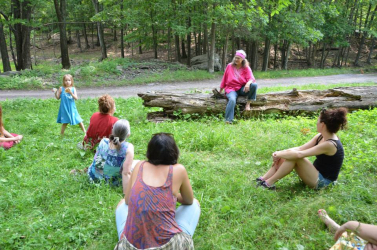
Herbalism, the use of plants for health and healing, is as old as humanity, if not older. In hunting/gathering societies, women are naturally the herbalists. This connection between women and herbs continues today. At the turn of the Century, herbalism in America is undergoing a renaissance. Throughout most of the rest of the world, especially in countries where women's wisdom has traditionally been honored, herbalism remains, as ever, the treatment of choice for many acute and most chronic health problems. Herbal medicine is a complex and daunting study; yet it is the medicine of the people and so simple that children safely apply it.
THE WISE WOMAN TRADITION
The earliest known herbalism is the Wise Woman Way: the way of our foremothers out of Africa, our ancient female ancestors. Herbalism is still used and respected in many places, especially the Orient, the mid-East, and India.
Wise women view herbs as spiritual allies and intrinsically important foodstuffs as well as medicines. Psychoactive plants are both teachers and healers, and are used, under the guidance of the herbalist/shaman, by all members of the community. Compassion, connection, community, and honor for the Earth characterize Wise Woman herbalism. The nourishing herbal infusions, mineral-rich vinegars, and edible herbs favored by wise women are generally considered safe, even in quantity, for all women, including those pregnant and lactating.
Favorite herbs include nourishing tonics such as nettle, red clover, oatstraw, comfrey leaf, linden, dandelion, seaweed, and burdock.
THE HEROIC TRADITION
In Europe, and then in the Americas, the Inquisition targeted Wise Woman herbalists/midwives and (often through torture and murder) replaced them with male Heroes, who used herbs to drive out the devils of illness from the hated body. Herbs that caused catharsis and purging were elevated, as was blood-letting.
The Heroic tradition, despising all things female, licensed only men as healers. Anyone who practiced without a license (women) was persecuted. Some escaped to the Americas, learned Native American herbal medicine, and served their communities - only to be vilified and replaced by school-trained male physicians from England several generations later. The Heroic tradition is still popular in Europe and in Latin and Black communities throughout the Americas. Domination, mentation, isolation, and distrust of the Earth (who is female and therefore considered sinful and dirty) characterize Heroic medicine.
Favorite herbs include powerful stimulants and sedatives such as cayenne, lobelia, valerian, ephedra, golden seal, cascara sagrada, turkey rhubarb, and aloes. Most Heroic herbs are dangerous to women, especially if pregnant or lactating.
THE SCIENTIFIC TRADITION
Where the practice of medicine becomes dominated by linear, either/or thinking, the Scientific tradition replaces the Heroic. Women and their connection to herbs are again vilified, as quacks, rather than as witches. The quest for powerful drugs brings plants to the laboratory, where active ingredients are extracted, concentrated, isolated, standardized, sanitized, and ultimately synthesized. Plants are raw materials, crude, inexact, and unpredictable.
Approximately 85 percent of the hundreds of thousands of drugs currently used are directly or indirectly derived from plants; eg foxglove (digitalis compounds), Pacific yew (cancer drug), wild yam (cortisone, birth control pills), and chinchona (quinine). Drugs and drug-like herbs cause severe side effects and should not be self-administered by pregnant and lactating women.
EXPLORING HERBAL MEDICINE: RESOURCES
- Achterberg, Jeanne. Woman As Healer: A panoramic survey of the healing activities of women from prehistoric times to the present. Shambala (Boston), 1990.
- Benedetti, Maria Dolores. Earth and Spirit: Medicinal Plants and Healing Lore from Puerto Rico. Verde Luz (Orocovis, Puerto Rico), 1998.
- Bennett, Jennifer. Lilies of the Hearth: The Historical Relationship Between Women & Plants. Firefly (Willowdale, Ontario, Canada), 1991.
- Brooke, Elisabeth. Medicine Women: A Pictorial History of Women Healers. Quest Books (Wheaton, Illinois & Madras, India), 1997.
- Women Healers: Portraits of Herbalists, Physicians, and Midwives. Healing Arts Press (Rochester, Vermont), 1995.
- Chamberlain, Mary. Old Wives Tales: Their History, Remedies and Spells. Virago (London), 1981
- Christopher, Dr. John R. School of Natural Healing: The Reference Volume on Heroic Herbal Therapy for the Teacher, Student, or Practitioner. Christopher Publications, 1976.
- Griggs, Barbara. Green Pharmacy: The History and Evolution of Western Medicine. Healing Arts Press (Rochester, Vermont), 1997.
- McClain, Carol Shepherd. Women As Healers: Cross Cultural Perspectives. Rutgers University Press (New Brunswick and London), 1989.
- Vogel, Virgil J. American Indian Medicine. University of Oklahoma Press (Norman & London), 1970.
- Weed, Susun S. Healing Wise: The Second Wise Woman Herbal. Ash Tree Publishing (Woodstock, New York), 1989.
- Wichtl, Max (edited and translated from the German by Norman Grainger Bisset). Herbal Drugs and Phytopharmaceuticals: A handbook for practice on a scientific basis. Medpharm Verlag (Stuttgart) & CRC Press (Boca Raton, Ann Arbor, London, Tokyo), 1994
Note: These resources are but a fraction of what is available. My emphasis is on the history of herbalism and the Wise Woman tradition, but I have included one Heroic (Christopher) and one Scientific (Wichtl) reference.
**********************************
Abundantly Well: Seven Medicines. The Complementary Integrated Medicine Revolution.
Seven medicines encompass all options for optimum health the Wise Woman Way, from serenity medicine to pharmaceutical medicine. Fully indexed, profusely illustrated, includes recipes.
The eagerly awaited sixth book in the best-selling Wise Woman Herbal Series fully integrates modern medicine with a wide range of scientifically proven alternatives.
For more information and to Pre-Order this book click here:
www.abundantlywellbook.com
If You Decide to Have a Mammogram
excerpt from Breast Cancer? Breast Health!
the Wise Woman Way
by Susun Weed

Are there other ways to find early-stage breast cancers?
In addition to physical examination and breast self-massage, thermography and ultrasound are safe tests available to women who wish to avoid mammograms.
Thermography gives a picture of the heat patterns in the breasts (cancers are hotter than the surrounding tissues). Ultrasound bounces sound waves off the breast tissues to measure their density (cancer is denser than the surrounding tissues). Other techniques used to image breast tissues, such as digital mammography and rely on radioactivity and are inherently unsafe.
If You Decide to Have a Mammogram
• Get the best, even if it means a long journey.
• Go where they specialize, preferably where they do at least 20 mammograms a day.
• Be sure the facility is accredited by the American College of Radiology.
• Insist on personnel who specialize in mammograms. (Taking and reading mammograms are skills that require intensive training and a lot of practice.)
• Ask how old the equipment is. Newer equipment exposes the breasts to less radiation. A dedicated unit (one specifically for mammograms) is best.
• Ask how they ensure quality control. When was their unit calibrated?
• Load your blood with carotenes for a week before the mammogram to prevent radiation damage to your DNA.
• Expect to be cold and uncomfortable during the mammogram, but do say something if you're being hurt.o The more compressed the breast tissue, the clearer the mammogram. (But pressure may spread cancer cells if they're present.)
• If your breasts are tender, reschedule. During your fertile years, schedule mammograms for 7-10 days after your menstrual flow begins.
• Don't wear antiperspirant containing aluminum; it can interfere with the imaging process. (Those clear stones do contain aluminum, as do most commercial antiperspirants.)
• If you want another opinion, you'll need the original mammographic films, not copies. (X-ray facilities only keep films for 7 years.)
• Get your doctor to agree, in writing, before the procedure, to give you a copy of your mammogram. The U.S. Public Health Service advises women to ask for written results from a mammogram.
• Given the high percentage of "false normal" mammograms, if you think you have cancer, trust your intuition.
• Remove radioactive isotopes from your body with burdock root, seaweed, or miso.
Mammograms don't promote breast health. Breast self-massage, breast self-exam, and lifestyle changes do.

 The Wise Woman Center exists to re-weave the healing cloak of the Ancients. This land is sacred, it is a safe space for women, and a place for the teachings of the Wise Woman way. The Goddess lives here, as do goats, fairies, green witches, and elders.
The Wise Woman Center exists to re-weave the healing cloak of the Ancients. This land is sacred, it is a safe space for women, and a place for the teachings of the Wise Woman way. The Goddess lives here, as do goats, fairies, green witches, and elders.


